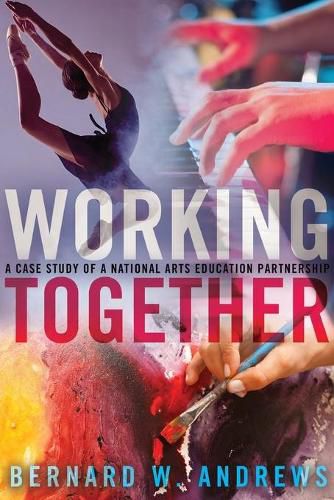Readings Newsletter
Become a Readings Member to make your shopping experience even easier.
Sign in or sign up for free!
You’re not far away from qualifying for FREE standard shipping within Australia
You’ve qualified for FREE standard shipping within Australia
The cart is loading…






This title is printed to order. This book may have been self-published. If so, we cannot guarantee the quality of the content. In the main most books will have gone through the editing process however some may not. We therefore suggest that you be aware of this before ordering this book. If in doubt check either the author or publisher’s details as we are unable to accept any returns unless they are faulty. Please contact us if you have any questions.
Partnerships among a variety of institutions - for profit, not-for-profit, and non-profit - are a relatively recent organizational development. Such partnerships link businesses, government, and social agencies. The primary reason for these relationships is to achieve goals sooner and more efficiently by building on the resources and expertise of each partner. In arts education, schools, arts organizations, cultural institutions, government agencies, and universities have engaged in joint ventures to improve the teaching and learning of the arts disciplines in their schools and in their communities. These partnerships have been particularly beneficial for teachers, many of whom have limited background in the arts but are expected to teach them in their classrooms. Arts partnerships initially focused on the goals of the participating organizations; that is, to develop artistic skills, to build future audiences, and/or to encourage young people to consider an artistic career. More recently, partnerships focus on educational goals rather than solely artistic ones. Despite the challenges and complexities of arts education partnerships, most partners believe that the benefits to students, teachers and the community outweigh the disadvantages and consequently, as the research in Working Together demonstrates, they are willing to justify the time, energy, and expense involved to improve the quality of arts education.
$9.00 standard shipping within Australia
FREE standard shipping within Australia for orders over $100.00
Express & International shipping calculated at checkout
This title is printed to order. This book may have been self-published. If so, we cannot guarantee the quality of the content. In the main most books will have gone through the editing process however some may not. We therefore suggest that you be aware of this before ordering this book. If in doubt check either the author or publisher’s details as we are unable to accept any returns unless they are faulty. Please contact us if you have any questions.
Partnerships among a variety of institutions - for profit, not-for-profit, and non-profit - are a relatively recent organizational development. Such partnerships link businesses, government, and social agencies. The primary reason for these relationships is to achieve goals sooner and more efficiently by building on the resources and expertise of each partner. In arts education, schools, arts organizations, cultural institutions, government agencies, and universities have engaged in joint ventures to improve the teaching and learning of the arts disciplines in their schools and in their communities. These partnerships have been particularly beneficial for teachers, many of whom have limited background in the arts but are expected to teach them in their classrooms. Arts partnerships initially focused on the goals of the participating organizations; that is, to develop artistic skills, to build future audiences, and/or to encourage young people to consider an artistic career. More recently, partnerships focus on educational goals rather than solely artistic ones. Despite the challenges and complexities of arts education partnerships, most partners believe that the benefits to students, teachers and the community outweigh the disadvantages and consequently, as the research in Working Together demonstrates, they are willing to justify the time, energy, and expense involved to improve the quality of arts education.